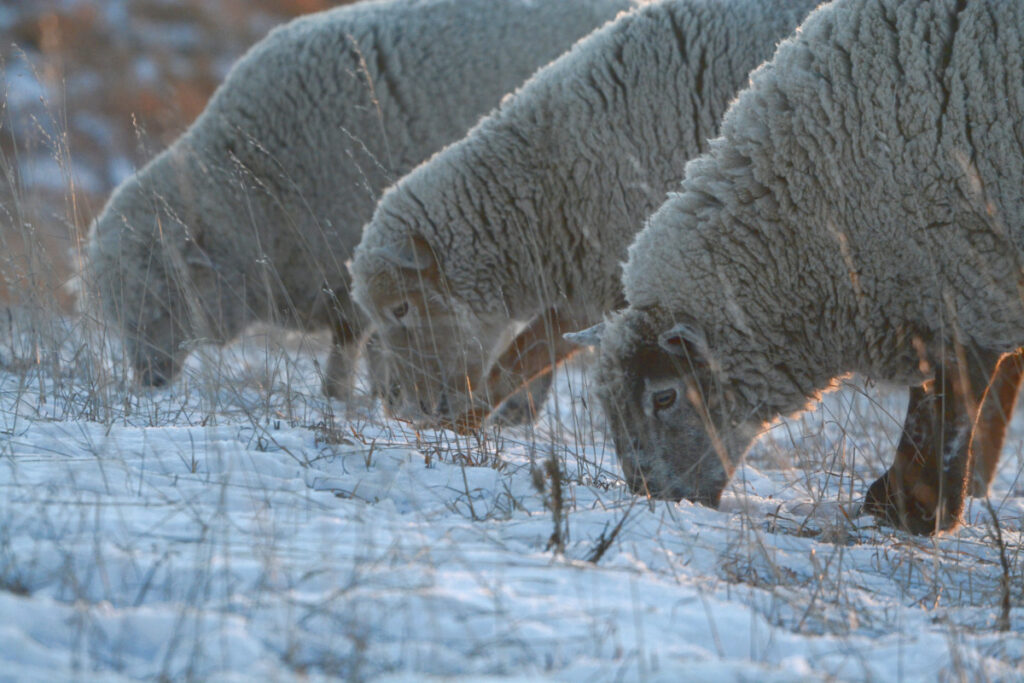January. A new calendar year is upon us. The longest night has passed, the daylight slowly lengthens and, on the prairie, the cold winter continues.
Speaking of grass based sheep in a place where winter reigns for 5 months of the year seems a little ill matched. Thoughts of grass blow out with the first wind swept snow and are replaced with more immediate thoughts of where to shelter and feed the flock. But even though grass is not first in our thoughts during winter the decision to keep the flock out on pasture is made with the prairie land in mind and the natural inclinations of livestock.

When people hear of sheep reared on grass in a cold climate place like the prairie there is curiosity with how well they do with foraging in the snow. I think sheep posses an exceptional will to forage from the land, and if I possessed half as much will as these ewes my life might be in a very different place. If there is morsels of grass where hay is being fed they will forage. Heavy snow, ice crust and bitter cold will stop them, but once these pass, exploration and grazing resumes. The tough part is stopping them if you do not want them to keep picking at the grass.
The ewes grazed on stockpiled forage up until Christmas when we moved them to a pasture that could use more hay residue and natural fertilizer that results in areas of hay feeding. However, the ewes are showing signs that they are not as content on this pasture and it took a couple days before they quit trying to return to the previous bed ground in the evening and use the new one.
Once snow load builds up and serious cold sets in one’s choices about where to feed become limited by the inability to get around out on the pasture. Then you balance what you can get done in extreme conditions with what you want to see happen. In this fashion winter provides a reprieve from obsessing about grass and grazing. I welcome this reprieve. I can shelf the worry and let Mother Nature hold on to it for the winter.